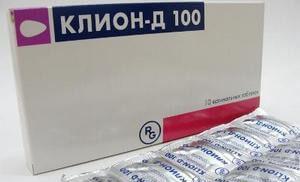Portuguese pastry Pastel de Belem. Pastel de nata Portuguese pastry recipe Pastel de Belem Portuguese pastry
P ashtel de nata is perhaps the most important culinary attraction in Portugal. I must say right away that the Portuguese are not only coffee lovers, but also notorious sweet tooth - their sweets are very, very sweet!

This is actually a cake custard was born in the Jerónimos monastery in the town of Belem, which is now a district, and its original name is Pastel de Belém. In 1837, the monks opened a confectionery near the monastery - pastelaria, which still exists in the same building, in the same place and is called Pasteis de Belém (Pasteis de Belém).

The cake recipe was originally classified and only a few people knew it, this tradition has survived to this day - each of the initiates swears not to disclose the secret recipe.

What is Pastel de Nata? These are variations on the Pastel de Belaine theme - some more, some less reminiscent of the original! Being in Portugal, you can be sure that all the options are amazing. The main thing - do not forget to sprinkle with cinnamon!
There are cakes, by the way, can be both warm and cold!
Pastel de nata is gaining more and more fans: recently a confectionery producing only Pastelia was opened in Moscow: http://pastelaria.moscow
And if you yourself are ready for sweet experiments, then we present to your attention several options for making Pastel de Nata at home:

Option 1
- 600g. puff pastry
- 500 ml. milk
- lemon or orange peel
- cinnamon stick
- 60 g flour
- 500 g sugar
- 250 ml. Water
- 7 yolks
- Vegetable oil or butter - to grease the molds
- Ground cinnamon and powdered sugar for dusting
Defrost the dough and gently roll it gently with a rolling pin (in one direction), then roll it tightly into a roll. Then cut the dough into slices about 1.5-2 cm thick. Arrange the slices in buttered muffin tins so that the spiral is visible. Spread the dough with two thumbs over the entire pan, turning in the same direction so that the thickness of the dough on the bottom is less than on the sides. Place molds on a baking sheet.
It is very convenient to use disposable thick foil muffin tins, which are sold in the store.
In a small container, mix the flour with a small amount of milk - so that the mass is homogeneous - without lumps, but not thick.
Boil the remaining milk with a cinnamon stick and a dry lemon peel and gradually introduce the milk-flour mixture, stirring constantly. Bring to a boil and remove from stove
In a separate container, mix sugar with water and boil for 3 minutes. Then gently pour sugar water in a thin stream into the cream, stirring constantly. Next, strain the cream to get rid of lumps, zest and cinnamon and leave to cool.
In a slightly cooled cream, add the yolks and mix everything until smooth.
Fill the molds with cream and send to the oven preheated to 250 degrees for 17-20 minutes - until the dough and cream are browned.
Slightly cooled Pashteli take out of the molds, sprinkle with powdered sugar or cinnamon (optional).

Option 2
- 400 g puff pastry
- 2.5 cups heavy cream (35%)
- 9 yolks
- 9 st. l. Sahara
- ground cinnamon
- Powdered sugar
We give only the method of preparing the cream - everything else is the same as in option 1.
Using a mixer, beat the yolks with sugar and cream until creamy. Put the saucepan with the mixture in a water bath and cook over low heat, stirring all the time, until the mass looks like a thick custard.

Option 3 (From Jamie Oliver)
- 375 g puff pastry
- 125 g fat sour cream
- cinnamon
- a teaspoon of vanilla extract
- 5 tablespoons of sugar
- one chicken egg
- orange
First you need to defrost and roll out 375 g of ready-made puff pastry. After that, cut it in half. You should get two squares about 20x20 cm in size.
Sprinkle generously with cinnamon and roll into a roll, which is then cut into six equal parts. Place each piece of cinnamon dough in the muffin mold. Press the dough well to form a cake. At the same time, take out the edges to get beautiful sides.
Preheat the oven to 200 degrees, place the cake blanks there and bake them for about 8-10 minutes.
Remove the zest from the orange and squeeze the juice out of it well. After that, thoroughly mix fat sour cream, one tablespoon of sugar, and orange zest.
When the baking time comes to an end, remove the fragrant lush blanks from the oven. Jamie Oliver advises lightly pressing down the baked brownies in the center with the convex side of a teaspoon. The finished cream should be distributed over the recesses of the mini-cakes. After that, return the blanks back to the oven and bake for another eight minutes.
Pay special attention to serving dessert. After the cakes are ready, pour them with warm caramel. Exquisite original treat is served slightly chilled, but warm.

But before we get to Portugal, let's make these cakes at home. They are prepared easily and fairly quickly. For their preparation they use puff pastry and custard, which is rich in flavors of lemon peel and cinnamon. It is possible to describe their excellent taste for a very long time, but it is better to try once. So let's get started.
Prepare the necessary set of ingredients.

First of all, we prepare the custard. Pour 200 ml of milk into a small saucepan, add cinnamon stick and lemon zest. The zest can be grated or carefully cut from a lemon with a knife. The main thing is that the crust should be without a white part, otherwise it will be bitter. Put the pot on the fire and bring to a boil.

Pour the remaining milk (100 ml) into a separate bowl and add the flour.

Mix thoroughly so that there are no lumps.

Pour the flour mixture into the boiling milk in a thin stream. Stirring constantly, boil for about 1 minute, until thickened, then remove the pan from heat.

Cook the sugar syrup separately. Pour water into a saucepan or small saucepan and add sugar.

Without stirring, send to the fire. Bring to a boil and boil for 3 minutes.

Pour the hot syrup into the milk-flour mixture in a thin stream, stirring constantly with a whisk.

The custard is almost ready. Strain it through a sieve to remove any lumps, lemon zest and cinnamon.

Cover the cream tightly with cling film so that a crust does not form, and cool to room temperature. Add the egg yolks to the warm cream and mix well. The custard for the Portuguese pasties is ready.

Roll the puff pastry into a roll. I had 4 sheets that I folded individually.

Cut into circles 1.5-2 cm thick.

Divide the batter into cupcake pans and spread it out with your hands to form the bottom and sides. If you have metal molds, then they must first be lubricated. butter. Silicone lubrication is not necessary.

Fill the molds with cream, not reaching the edges of about 5 mm (as in the photo). The cream will rise a lot during baking.

Bake for 20-25 minutes in an oven preheated to 250 degrees. The baking time depends entirely on your oven. The dough should be baked and become golden in color, and the cream should thicken and brown.

Delicious Portuguese pasties with custard are ready. From the indicated amount of ingredients, I got 20 small cakes.

Take them out of the molds, cool a little, and you can taste. They are served warm or chilled with a cup of aromatic tea.

Bon appetit!


Portuguese pastry "Pastel de Belem"
The most delicious cake I've had in recent months is the Portuguese one. "Pastel de Belem" in the patisserie of the same name in Lisbon. The recipe for this sweet wonder, said to have been compiled by the monks of the Jeronimos monastery, is a closely guarded secret, so any attempt to make Pastel de Belem at home is, at first glance, doomed to failure.On the other hand, in any coffee shop in Lisbon and even on the resort island of Madeira, a thousand kilometers from the Portuguese capital, you can see Pastel de Belem on the menu, which were clearly made in some other institution than the one that gave the cake its name. The taste of these surrogate products varies from unremarkable to very appetizing.
In general, I can say that the recipe Pastel de Nata(another name Pastel de Belem) did not disappoint me. This is still quite far from the feeling of delight that acquaintance with the authentic invention of the Portuguese monks causes, but very, very good.
RECIPE OF PORTUGUESE PASTEL DE BELEM CAKE
from the culinary blog "All Salt"
NECESSARY:
400 g puff pastry (frozen)
2.5 cups heavy cream (35%)
9 yolks
9 st. l. Sahara
ground cinnamon
Powdered sugar
HOW TO COOK:
1. Defrost puff pastry. Roll out lightly and roll tightly along the long side. Cut into pieces 2 cm thick.

Roll up the dough tightly
2. Grease cake molds with vegetable or butter. Take a piece of dough so that the spiral is at the bottom of the mold and spread it along the walls with your fingers.

Divide dough into molds
3. Place in the refrigerator while the cream is preparing.
4. Preheat oven to 250°C.
5. Using a mixer, beat the yolks with sugar and cream until creamy. Put the saucepan with the mixture in a water bath and cook over low heat, stirring all the time, until the mass looks like a thick custard.

Cream preparation
6. Remove the molds with the dough from the refrigerator and put 1 tbsp. l. cream in each mold.

Divide the cream into molds
7. Bake for 20 minutes or until pastry is browned on the sides. If you pierce the center of the cream with a wooden toothpick, it should come out dry.
8. Cool the tartlets for 5 minutes, remove from the molds and sprinkle with ground cinnamon and powdered sugar if desired.
BY THE WAY: you need to eat cakes warm, and the next day reheat in the microwave or in the oven.
portuguese pastry
This summer we were in England at a Russian-Portuguese wedding, where I got acquainted with the divinely delicious dessert Pastel de Nata. Initially, my eyes fell on beautiful, exquisite pasta, which beckoned with its color and shape. Next to them stood unremarkable baskets of yellowish cream. For the sake of interest, I decided to try one such basket and was amazed. I have never tried such a delicious dessert made from dough and custard!
After the wedding, a couple of months passed and the dessert remained just a dream. But then I met my friend who had just returned from Portugal. Knowing how much I love talking about food and new dishes, she told me about the famous Portuguese dessert Pastel de Nato. When I saw his photo, I realized - this is HE, the dessert of my dreams!
After that, without thinking for a long time, I found the recipe for these famous baskets and now I am sharing it with you. I want to warn you right away - if you do not like a strong lemon taste, then put the lemon zest half as much as indicated in the recipe.
Ingredients

Cooking pastel de nata
- I bought puff pastry from the store. Take a non-sweet dough, otherwise there will be too much sugar, since the cream in the dessert is very sweet. It took me 6 plates of dough, each of which weighs 100 grams. I took them out of the freezer and let them thaw for 30 minutes. When the dough has thawed, you need to connect the plates. To do this, lay out the plates so that they are slightly on top of each other and roll them out with a rolling pin on top. The dough plates will join and form a large rectangular layer.

- Next, tightly roll the dough into a roll.


- After that, cut the roll into pieces, 1.5-2 cm wide. As a result, you should get 18-20 pieces.

- Take a baking dish and grease each cavity with butter.
- We lay out the dough in molds so that a slice of a piece is visible (we put a piece of dough with a spiral up).

- With your thumb, press on the middle of the piece and begin to smear the dough in shape to the brim.

- Now let's move on to the cream. Add some milk to the flour and mix well.


- Pour the rest of the milk into a saucepan, add the lemon peel, cinnamon stick and start cooking.

- As soon as the milk begins to boil, add the milk-flour mixture, wait a couple of seconds, turn off the heat and mix everything well.

- Pour sugar into a separate pan and pour 250 ml of water. Put on fire and bring to a boil, stirring constantly.

- As soon as the water with sugar boils, we note the time. The water should boil for exactly three minutes, after which the pan must be removed from the heat.

- Pour the sugar water into the cream in a thin stream in several stages. They poured a little water, stirred the cream well and again poured a little water and mixed the cream well. We do this 5-7 times.


- Strain the cream through a colander into a separate bowl.

- Add the yolks to the cream and mix everything well.

- The cream should turn yellow, as shown in the photo.

- Pour the cream into molds and put in an oven preheated to 250 degrees for 17-20 minutes.

- Pastel de nata is ready when the cream begins to turn brown.

Bon Appetit everyone!
Portuguese cuisine.
Cream puff pastry recipe
Pastel de Belem (Pashtel de Belém)
and Pastel de nata (Pashtel de nata)
I'll start with the most famous culinary attraction in Portugal - the Pastel de Belém cake (Pashtel de Belém), the Portuguese pronounce it almost like Bylen, plural- pasteis (pateish). This cake with cream custard is very tasty. This cake is loved not only by the Portuguese themselves, in other countries it is a great success.
The history of Pastel de Belen is very curious. In past centuries in Portugal, many monasteries had a fairly strong culinary tradition and until now the monastic sweets are held in high esteem by the Portuguese. The monks kept secret the recipes for making their sweets, i.e. were "monopolists". So, they say that the monks of the monastery of Jerónimos (Jeronimos or, as they sometimes translate into Russian - Jerome), began to sell these cakes in order to support their monastery and opened a confectionery for this in 1837 near the monastery in the city of Belém (Belen), now it is a district of Lisbon. This confectionery or pastelaria in Portuguese (pashtelaria) still exists in the same building, in the same place and is called Pasteis de Belém (Pasteis de Belém).
At that time, Belem and Lisbon were remote cities and were connected by steamboat traffic. Jeronimos Monastery and Belem Tower (Torre de Belém) have always been attractive to tourists, who, in turn, appreciated not only the sights, but also the excellent taste of the cake.
From the very beginning, the secret of making a cake was hidden behind seven seals. Now only three people know this secret of the recipe: two owners of this confectionery and a pastry chef. Every initiate swears to keep this secret secret.
Until now, these cakes are made by hand and you can see it with your own eyes. In the confectionery part of the kitchen is fenced off with a huge glass, from where any visitor can watch the process.

Let's finally try this cake. Stop! Do you know how to eat it right? It means this: there should be two cakes per person, then they are sprinkled with powdered sugar and cinnamon, and only then they are eaten. Tip: when you take a bite, breathe carefully, otherwise you can get dirty with powdered sugar.
Pastel de nata (Pashtel de nata)
Today, any pastry shop or cafe in Portugal offers to taste Pastel de nata (Pashtel de Nata) - this is an analogue of Pastel de Belen, only without the "secret". This delicious cake is often offered along with coffee at a very attractive price. An original cake costs about 1 euro, an ordinary cake in a cafe can cost from 0.80 to 1.5 euros, depending…
It's fun to make your own cake! Portuguese cuisine is famous for its sweets and the sweets here are quite sweet, pardon the tautology. To my surprise, there are few fruit pies in Portuguese cuisine. If it's fruit, then it's mostly apples and oranges. Eggs are used a lot.
Pastel de nata (Pashtel de nata )

Ingredients:
600 g ready-made puff pastry
500 ml. milk
lemon peel
cinnamon stick
60 g flour
500 g sugar
250 ml. Water
7 yolks
Cooking
Roll out a little dough with a rolling pin and roll into a roll. Then cut the dough into slices about 1.5 cm thick. Arrange the slices in buttered muffin tins. Spread the dough with two thumbs over the entire pan, turning in the same direction so that the thickness of the dough on the bottom is less than on the sides. Place molds on a baking sheet.
Advice! It is very convenient to use disposable thick foil muffin tins, which are sold in the store.
http://annaportugal.ru/recept-pastel-de-nata
A few more recipes for the famous Portuguese sweets from different authors:
Portuguese pastry "Pastel de Belem"
NECESSARY:
400 g puff pastry (frozen)
2.5 cups heavy cream (35%)
9 yolks
9 st. l. Sahara
ground cinnamon
Powdered sugarHOW TO COOK:
1. Defrost puff pastry. Roll out lightly and roll tightly along the long side. Cut into pieces 2 cm thick.
2. Grease cake molds with vegetable or butter. Take a piece of dough so that the spiral is at the bottom of the mold and spread it along the walls with your fingers.
3. Place in the refrigerator while the cream is preparing.
4. Preheat oven to 250°C.
5. Using a mixer, beat the yolks with sugar and cream until creamy. Put the saucepan with the mixture in a water bath and cook over low heat, stirring all the time, until the mass looks like a thick custard.
6. Remove the molds with the dough from the refrigerator and put 1 tbsp. l. cream in each mold.
7 . Bake for 20 minutes or until pastry is browned on the sides. If you pierce the center of the cream with a wooden toothpick, it should come out dry.
8. Cool the tartlets for 5 minutes, remove from the molds and sprinkle with ground cinnamon and powdered sugar if desired.
BY THE WAY: you need to eat cakes warm, and the next day reheat in the microwave or in the oven.
Note:
From the comments to the recipe:
You forgot to mention that puff pastry can only be rolled in one direction. Otherwise, the dough ceases to be puffy and is baked in a completely different way than it should be. And the recipe is great, thanks!http://www.domashniy.ru/frticle/eda/
Portuguese pastries with custard

For 12 pcs. you will need:
225 g ready-made puff pastry
175 ml ready-made custard
2 tbsp. l. powdered sugar
Cooking:
1. Preheat the oven to 200 degrees C. Roll out the dough and cut out 12 circles with a diameter of 14 cm. Place them in a mold with 12 recesses.
2. Put parchment on each circle and fill them with dry beans or raw rice (so that the dough does not rise).
3. Bake the cakes for 10-15 minutes, or until the dough is baked. Remove paper and dry beans/rice and let cool.
4. Fill the baskets with custard and sprinkle with powdered sugar. Place the brownies under the grill and cook until the sugar caramelizes. Remove from heat and let cool.













